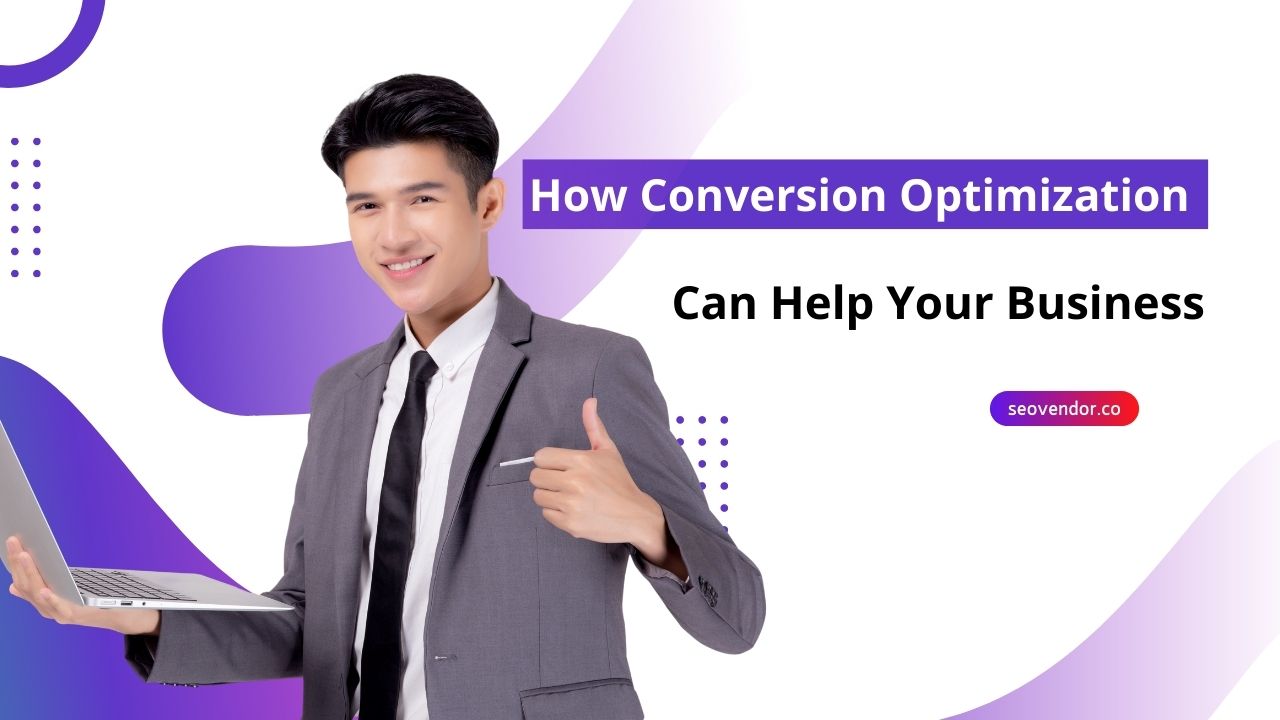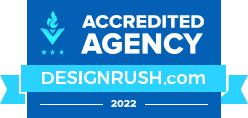For businesses stuck in a rut, converting more website visitors into paying customers is a surefire way to supercharge their performance—no more stressing about driving up traffic numbers. Think of your website as a finely tuned machine, turning random browsers into raving fans. That’s what we do—we tweak the gears to make every interaction count, not just boost the numbers.
Get the CRO basics down pat, and you’ll be thrilled to discover how it pays off in the long run—we’re talking higher sales, stronger customer connections, and a website that’s optimized for success. As we continue to tweak these tactics, regular check-ins will help us distinguish between what’s driving results and what’s just along for the ride.
With the ever-shifting landscape of conversion optimization, identifying its potential to drive long-term growth is more important than ever.
The Key Benefits of Conversion Optimization
Picture this: you’re running a profitable business, and the money’s rolling in. That’s what conversion optimization can do for you—supercharge your revenue by fine-tuning your sales process. Amp up your site’s conversion rate, and you’ll rake in more cash without begging for extra visitors.
By doubling down on your current traffic, you’ll reap the rewards of a higher return on investment—it’s the smart way to maximize your marketing spend. A major factor in this scenario is how easily and intuitively people can find what they need on your site.
When navigating through your site becomes easier and more intuitive, people are likely to complete actions like buying something or signing up for information. This significant boost in conversions yields a double benefit: happier customers who keep coming back for more.
Imagine being able to redirect the money you’re currently spending to draw in new business towards more profitable pursuits—that’s the payoff of getting conversion optimization right. Otherwise known as customer acquisition costs.
Since drawing in fresh traffic can be pricey, bolstering conversions from existing visitors lets you stretch every marketing dollar further. The essence of the matter boils down to Turning website visitors into paying customers, which is an art that requires careful analysis and tweaking—we’re talking strategic tweaks that get people to take action.
Figuring out what propels people’s online actions is a top priority. Be it their preferences or common issues they face when interacting with websites. When companies scrutinize user behavior, they uncover hidden opportunities to streamline their websites and amplify their marketing clout. This increased understanding yields faster, more nimble websites and campaigns that really resonate.
The Basics of Conversion Optimization
- Optimize Landing Pages: Your landing pages are the first impression users have of your site. Make sure they clearly match what visitors are seeking to increase engagement. Avoid adding unnecessary information that distracts from the main message or goal. Use straightforward language and visuals that guide visitors towards taking action, such as making a purchase or signing up.
- Refine Your Conversion Funnel: Understand the journey your customers take on your website from start to finish. It begins with them becoming aware of your product or service and ends with their decision to convert. At each stage, provide content that addresses their needs and nudges them closer to conversion—whether through informative blog posts, testimonials, or compelling offers.
- Implement A/B Testing Regularly: A/B testing lets you compare different versions of webpages to see which one works best for converting visitors into leads or customers without relying on guesswork. Experiment with various headlines, CTAs, images, or page layouts. This approach is grounded in data. By analyzing results, you can make informed changes that directly improve conversion rates.
By focusing on these areas, you create an environment where every visitor has a clear path toward becoming a customer… Remember, the ultimate goal is not just attracting traffic but turning those numbers into meaningful engagements and relationships. With careful attention to detail along this pathway, you entice more people toward saying “yes” to whatever you’re offering.
Common Conversion Optimization Strategies
Let’s dive straight into optimizing your website conversions with proven strategies. First up, A/B testing is indispensable. Simply put, if you’re weighing two different headlines, A/B testing contrasts them to show which one draws more clicks or sales.
Then, there’s multivariate testing for the adventurous marketer. This technique checks various elements on a page at once. Imagine tweaking your headline, image, and call-to-action (CTA) together to find the winning combo.
Speed isn’t just about saving time; it directly ties into how well your site converts visitors into customers. If your pages load slowly, people bounce off quicker than you can say “lost opportunity.” Tools from Google, like PageSpeed Insights, are here to rescue you from this pitfall by highlighting what’s slowing down your site.
Now, onto crafting persuasive CTAs—think of them as the beacon guiding users toward taking action. Your CTA needs two things: clarity and appeal. Use straightforward language that leaves no room for doubt about what happens next, like “Buy Now.”
Combine this with eye-catching colors that stand out but still fit in with overall design principles. By applying these tactics thoughtfully and continually refining based on test results, expect not only improvements in user engagement but also significant boosts in conversion rates.
Measuring and Analyzing the Effectiveness of Conversion Optimization
Measuring and analyzing the effectiveness of conversion optimization plays a critical role in enhancing your business’s online performance. Let’s dive deeper into how this can be achieved effectively.
- Assess Conversion Rate: The backbone of measuring success is through tracking the percentage of visitors who complete the desired action on your site. Utilize tools like Google Analytics to monitor these metrics closely, identifying trends over time or sudden shifts that warrant attention. An increase implies effective optimization; conversely, a dip may indicate issues needing investigation.
- Examine User Behavior Metrics: Bounce rate and exit rate offer insights into potential friction points within your website experience. Bounce rate shines a light on visitor engagement—high rates suggest content or user interface improvements are needed. Exit rates help pinpoint exact pages where users tend to leave, guiding you toward specific areas for refinement. These indicators should direct iterative design and content updates aimed at reducing unnecessary departures.
- Leverage Customer Insights: Customer feedback represents an invaluable data source directly reflecting their experiences with your brand online. Gathering information through surveys yields constructive criticism necessary for refining strategies further down the line. Please engage customers proactively after interactions to understand what worked well or needs improvement from their perspective… This real-time input fuels ongoing enhancements in conversion strategy execution.
By focusing on these key aspects—monitoring vital metrics such as conversion rates, scrutinizing behavior patterns via bounce and exit rates, plus incorporating actual customer feedback—businesses can sculpt highly optimized web environments conducive to improved conversions.
Future Trends in Conversion Optimization
In the landscape of conversion optimization, three emerging trends are set to redefine how businesses approach their online strategy. Let’s dive into these one by one. First, AI and automation play an increasing role in boosting website conversions.
With tools that offer real-time adjustments based on user behavior, businesses can now anticipate needs and personalize experiences without manual intervention. This sophistication in technology streamlines A/B testing, too, making it faster to pinpoint what works best for engaging visitors. Secondly, micro-conversions deserve more attention than they typically receive.
Like a visitor signing up for your newsletter or watching an introduction video. Are stepping stones towards your main conversion goal?
By optimizing for these incremental engagements, you draw users deeper into the sales funnel with each action taken. Lastly but equally significant is voice search optimization, as voice-activated devices gain popularity among consumers globally. Optimizing content for conversational queries will become crucial so that when potential customers use voice search to ask questions related to your industry or product offerings, your business appears right where they’re looking.
Adapting swiftly to include these elements within conversion strategies offers a proactive way forward amidst evolving digital behaviors, further aligning customer journeys toward successful outcomes not just today but well into the future.
Conversion Optimization as a Long-Term Strategy
- Continuous improvement: Conversion optimization is not a one-time effort but a continuous process of enhancing your website’s performance. Start by pinpointing areas for improvement, such as page loading speed or user interface design. Then, changes will be applied based on data and customer feedback. It’s crucial to keep testing these adjustments to refine them further.
- Learning from customers: Understanding how visitors interact with your site informs better decision-making for business growth. Implement tools that track user behavior, like heatmaps or session recordings; this gives insights into what works and what doesn’t on your platform. Use this information to make the necessary tweaks, ensuring a more engaging experience that encourages conversions.
- Data-driven decisions: The backbone of successful conversion optimization lies in making informed choices guided by statistics rather than intuition alone. Regularly analyze performance metrics to identify trends over time, adapting strategies accordingly ensures you’re always ahead of curve shifts in customer preferences or market dynamics. Leveraging solid data equips businesses with the foundation needed for sustained success—making every visitor count maximize revenue potential from existing traffic, steadily boosting overall effectiveness online presence far beyond simple gains.
Conversion optimization is like finding the sweet spot for your website. It turns visitors into buyers right where you need them to be. With SEO Vendor, we tailor strategies that engage and persuade audiences effectively.
This process boosts sales without needing more traffic—a clever trick! Imagine fine-tuning your site so every click has a purpose for growth. That’s what we offer: smart moves in a digital space crowded with competition.
Remember, it’s not just about attracting eyes; it’s about sparking action.









